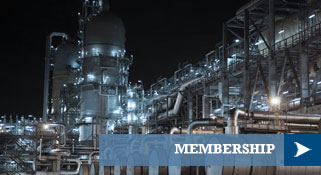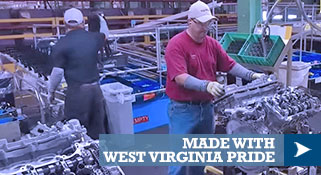- Details
 Charleston, W.Va. – The West Virginia Manufacturers Association (WVMA) is launching a new community support program on February 14, 2017, to make a positive impact on communities in the state.
Charleston, W.Va. – The West Virginia Manufacturers Association (WVMA) is launching a new community support program on February 14, 2017, to make a positive impact on communities in the state.
WVMA Cares is community support program created to highlight the impact of manufacturing in West Virginia and build on the foundation that manufacturers provide throughout the state.
“Manufacturers are community partners who believe in contributing to their state, cities and towns. From supporting local schools and sports teams to providing thousands of volunteer hours around the state, manufacturers give back,” said Rebecca McPhail, WVMA president.
WVMA member companies make an impact on West Virginia that goes beyond the thousands of jobs they provide. In 2016, companies surveyed provided more than 15,000 volunteer hours, gave nearly $2 million in charitable support and more than $1 million of in-kind/product donations.
- Details
The West Virginia Manufacturers Association hosted its first Annual Winter Convention last week bringing together industry leaders, state officials, and Governor Elect Jim Justice for a meeting to discuss the improvement of industry competitiveness.
As part of the Convention, the group unveiled A New Blueprint – Making the American South’s Manufacturing Sector More Competitive by 2030. The report, researched and written by Ted Abernathy of Economic Leadership LLC, provides an at-a-glance look of the position of southern states in competing for new manufacturing investment. Abernathy provided a Blueprint presentation with West Virginia specific opportunities and challenges.
The full Blueprint Report provides a scorecard of sorts with which to measure the future growth and a refocused economic strategy to assist southern U.S. states in developing policies to raise the regional profile for manufacturing firm site selectors and investors.
- Details
 As reported in the Gazette-Mail on December 4, the Affiliated Construction Trades (ACT) led an effort about 20 years ago to prevent construction of a $1 billion dollar pulp mill to West Virginia.
As reported in the Gazette-Mail on December 4, the Affiliated Construction Trades (ACT) led an effort about 20 years ago to prevent construction of a $1 billion dollar pulp mill to West Virginia.
The pulp plant had not committed to using union labor for construction, and the ACT developed and funded a campaign to have the state deny the facility a wastewater discharge permit.
While the permit was finally approved after lengthy appeals, the pulp mill was never built in Apple Grove. Ultimately, the pulp mill didn’t get built anywhere, as financial markets changed after repeated delays.
- Details
During this election cycle, we heard from pundits, candidates, and our neighbors that Washington, D.C., is not getting enough done.
While it’s not yet clear what the election results mean to our state or Washington, a little-known federal transportation agency is already taking action on freight-rail issues that will mean a lot to the more than 48,000 men and women who work in West Virginia’s manufacturing sector.
These improvements to freight rail policy are important to our state because West Virginia manufacturers and energy producers send and receive more than 106 million tons of products a year by rail, according to the most recent data available from the Association of American Railroads.







